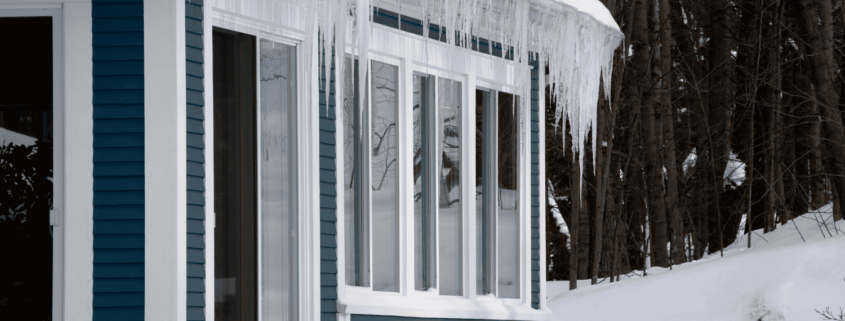How to Prevent Formation of Icicles on Gutters
How to Prevent Formation of Icicles on Gutters
Icicles forming on gutters can signal serious roofing problems. This article explains why icicles on gutter form and offers steps to prevent damage.
Key Takeaways
-
Icicles often indicate underlying problems such as ice dams, which can cause severe water damage to roofs and interiors.
-
Poor insulation, clogged gutters, and weather conditions are primary causes of icicle formation and can be addressed through better insulation, gutter maintenance, and proper ventilation.
-
To prevent icicles and ice dams, homeowners should implement regular maintenance, upgrade roofing materials, and consider installing gutter guards for better drainage.
Understanding Icicles and Ice Dams
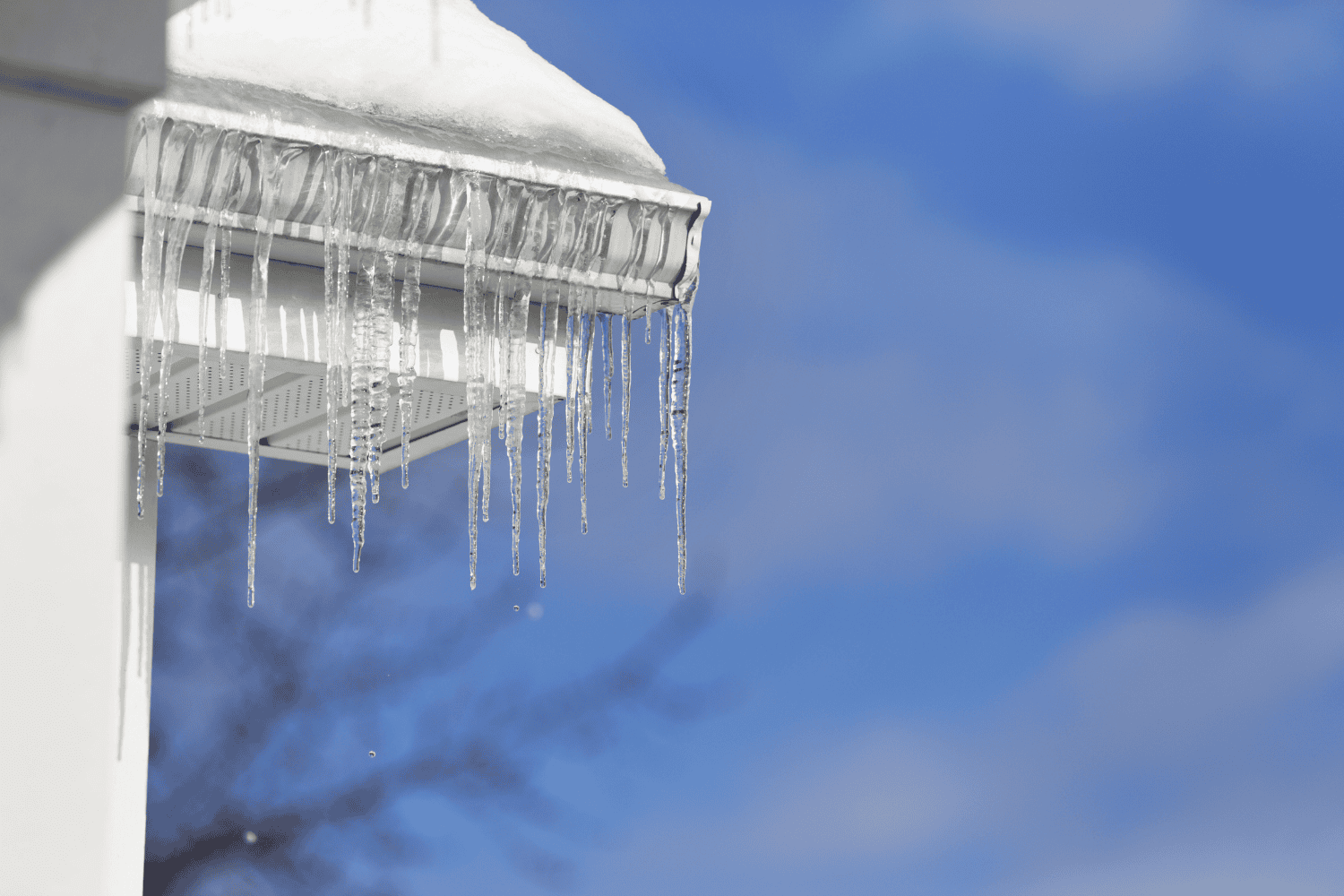
Stone veneer siding combining natural beauty with strength.
Knowing how icicles and ice dams form is crucial for managing and preventing them. Icicles and ice dams form due to a combination of melting snow and freezing temperatures, but they have very different implications. While icicles hanging from gutters might seem harmless, they often signal the presence of ice dams, which can lead to severe roofing problems.
Next, let’s explore the formation of icicles and the distinctions between icicles and ice dams.
What Are Icicles and How Do They Form?
Icicles typically form when snow melts on the roof and then refreezes at the edges due to cold air. This process requires three main conditions: the presence of water from melting snow, heat loss from the home, and below-freezing temperatures. As snow melts from the heat escaping your home, the water trickles down to the colder edges of the roof, refreezing into icicles.
Sunlight also contributes to icicle formation by warming the rooftop, causing snow to melt. The water flows to the edges and refreezes as temperatures drop, resulting in icicles. This melting and refreezing cycle continues, causing small and large icicles to grow.
The Difference Between Icicles and Ice Dams
An ice dam is a buildup of ice on the edge of the roof that prevents melting snow from draining. Unlike icicles, which drip off roofs, ice dams form blockages that cause water to back up and freeze, leading to significant ice buildup. This blockage can lead to water seeping under shingles, causing damage to the roof and interior of the home.
While icicles themselves do not cause ice dams, they are often a visible sign of underlying issues. Large icicles, particularly those two or more inches in diameter, can indicate that ice dams occur. Understanding this distinction is crucial for addressing the root cause of the problem and preventing further damage.
Causes of Icicles on Gutters
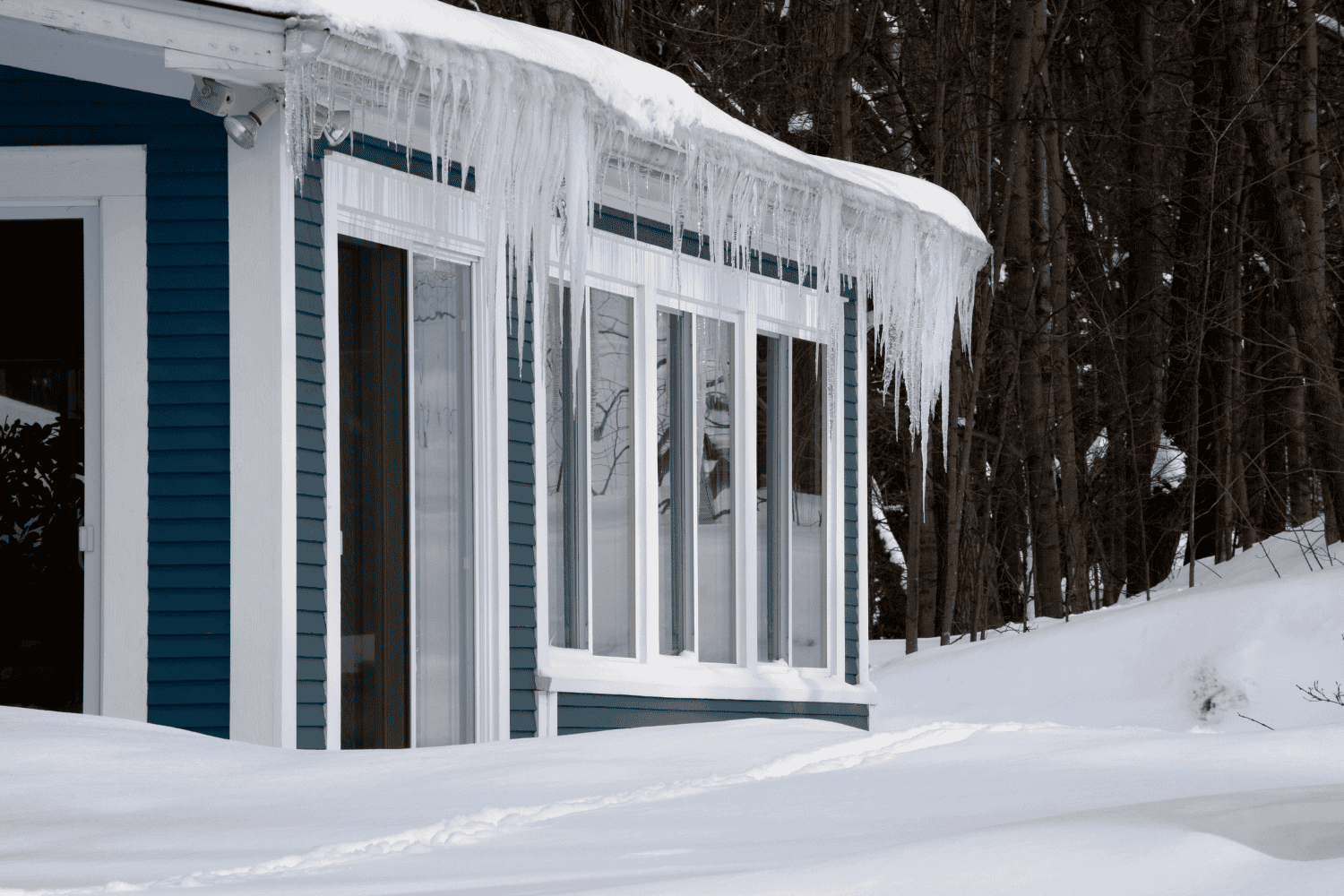
A well insulated attic, demonstrating prevention of icicles and ice dams.
Several factors contribute to the formation of icicles on gutters, including poor insulation, clogged gutters, and specific weather conditions. Each of these causes plays a role in the melting and refreezing process that leads to icicles and ice dams. Examining these causes can help us understand how to prevent them.
Poor Insulation and Ventilation
Poor insulation is the primary culprit behind heat loss that causes snow to melt on the roof. When heat escapes from the attic due to insufficient insulation, it warms the roof, causing the snow to melt. As the melted water flows down and reaches the colder edges of the roof, it refreezes, forming icicles and potentially ice dams.
Ventilation is equally important, as it helps maintain a consistent attic temperature, preventing uneven snow melting. Inadequate ventilation allows heated air to escape, furthering the melting and refreezing cycle at the roof’s edges.
Clogged Gutters
Clogged gutters are another significant cause of icicle formation. When gutters are blocked, they trap water that quickly freezes, increasing the risk of ice buildup. This trapped water, unable to flow freely, exacerbates the formation of both icicles and ice dams.
As the water in clogged gutters freezes, it creates blockages that further impede drainage, leading to even greater icicle formation. Regular gutter maintenance is crucial to prevent these issues and ensure that water can flow freely, reducing the likelihood of ice buildup.
Weather Conditions
Weather conditions, especially during the winter months, play a significant role in how icicles form. Rapid temperature changes can lead to alternating melting and freezing, fostering the development of icicles. The combination of melting snow during warming periods followed by freezing temperatures results in the formation of icicles along gutters.
Risks Associated with Icicles on Gutters
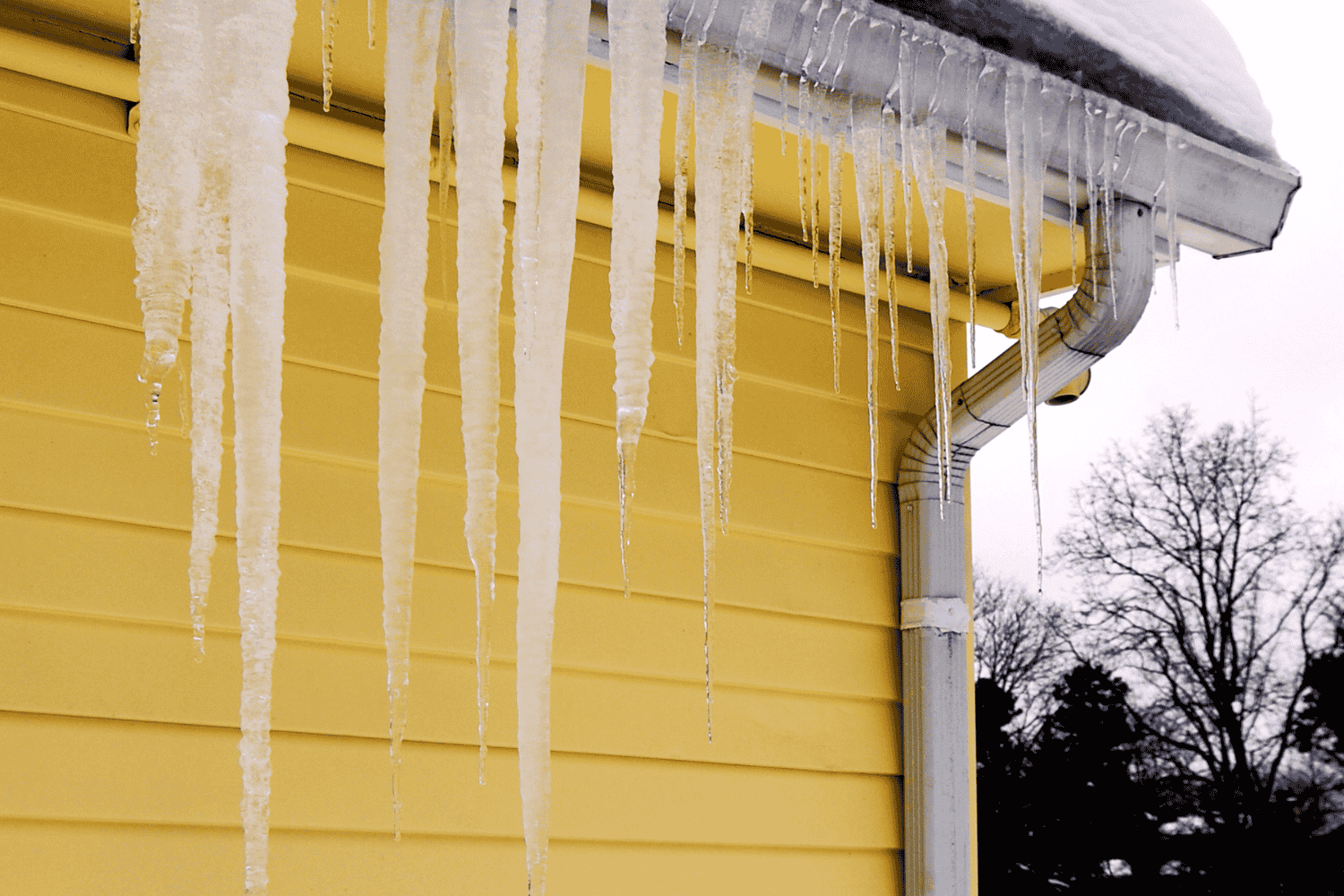
Clogged gutters filled with snow and icicles, indicating potential ice dam formation.
Icicles hanging from gutters pose several risks, from safety hazards to structural damage. Understanding these risks can help in taking proactive measures to prevent them.
Safety Hazards
Icicles can pose severe risks to people, including injuries and even deaths from falling ice. Falling icicles can cause serious injuries, especially if they hit someone unexpectedly. Attempting to remove icicles can also lead to injuries, as falling ice can behave unpredictably.
Roof and Gutter Damage
Heavy icicles can cause gutters to become detached or damaged from the weight of the ice. When ice builds up, gutters can bend or rip away from the house due to the added weight. This damage can lead to costly repairs and further complications if not addressed promptly.
Regular inspection and cleaning of gutters help prevent ice formation by allowing melted snow to drain efficiently. Maintaining gutters and roofing materials is key to avoiding icicles and ice dams, thus protecting your home’s structure.
Water Damage
Ice dams can cause significant water damage inside the home. When water backs up behind an ice dam, it can seep under shingles and into the home, leading to leaks and water damage. Moist insulation leads to heat loss, causing more ice dams and roof leaks.
Proper insulation and ventilation manage accumulated snow and prevent water damage. While running hot water over an ice dam is a temporary fix, addressing the root cause is necessary to prevent future issues.
Preventing Icicles on Gutters
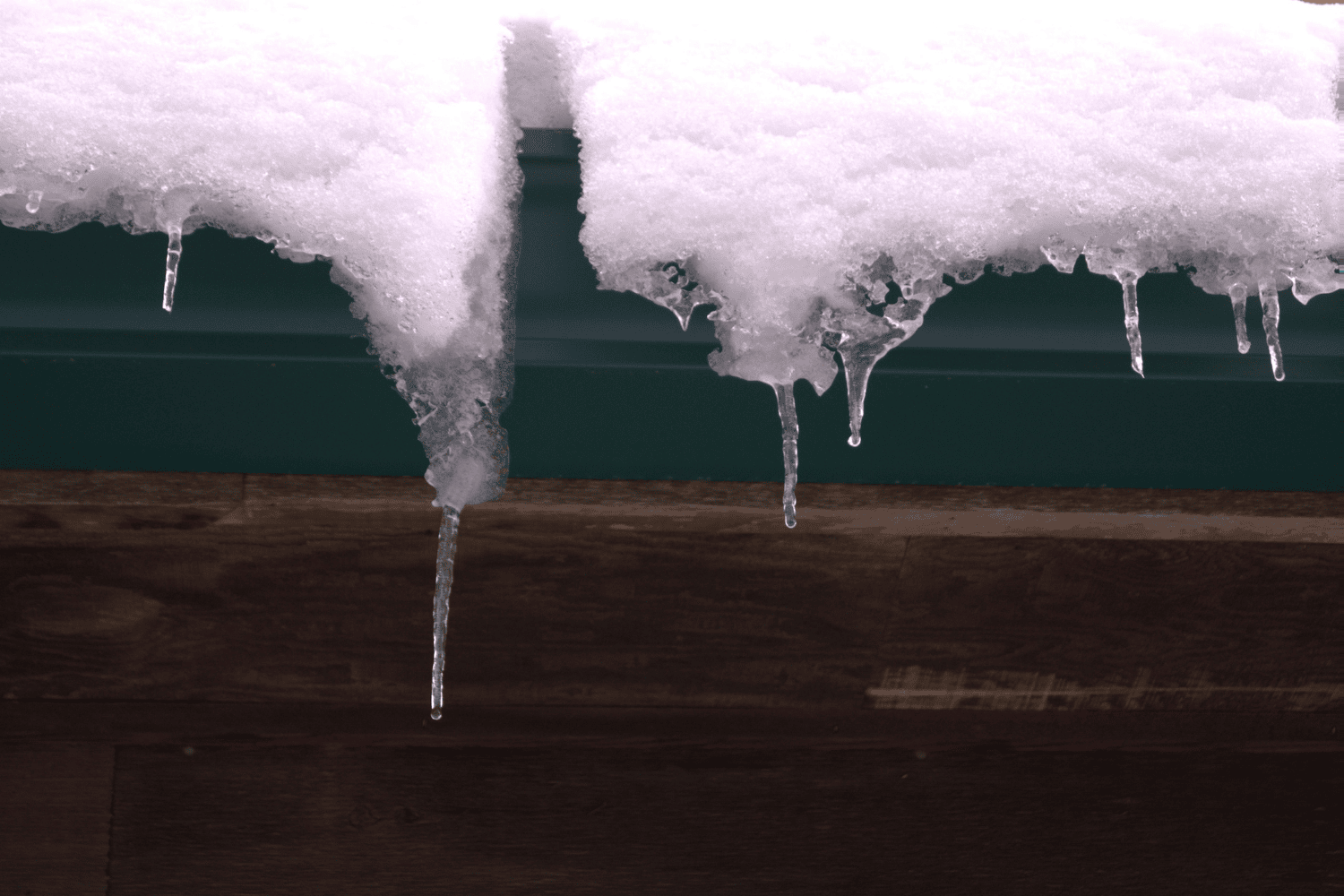
Damage caused by ice dams, with icicles visible on a roof.
Preventing icicles and ice dams begins with proactive steps like enhancing insulation, ensuring proper ventilation, and maintaining gutters regularly to prevent ice dams. These steps can significantly reduce the likelihood of icicle formation and protect your home from winter damage.
Adequate insulation is key to preventing heat loss and icicle formation. The attic insulation should have an R-value of at least R-30, with R-38 recommended for colder regions. Investing in high-quality insulation helps to minimize heat loss and reduce icicle formation.
Proper ventilation maintains a consistent attic temperature, preventing uneven snow melting on the roof. Soffit vents allow cold air to lower attic temperatures, stopping snow from melting and refreezing into icicles.
Cleaning gutters regularly prevents water blockage and ice formation. This maintenance ensures water flows freely, reducing the risk of icicles and ice dams.
Effective Methods to Remove Existing Icicles

Icicles hanging from a roof, showcasing the formation of ice dams.
If icicles have formed, effective removal methods include using a roof rake, applying safe melting solutions, and hiring professional ice removal services. Each method has its advantages, and understanding them can help you choose the best approach for your situation.
Using a Roof Rake
A roof rake safely removes snow from the roof’s edge to prevent icicles. Use it gently to avoid damaging the roofing material. Position yourself on the ground to maintain safety and reduce the risk of falls.
Applying Safe Melting Solutions
Calcium chloride is an effective and less harmful alternative for melting ice on roofs. It works efficiently at low temperatures and doesn’t damage roofing materials. Using safe melting solutions helps prevent damage to your roof while effectively melting icicles, especially when the roof melts.
Professional Ice Removal Services
Improper removal methods, such as using hammers and shovels, can lead to accidents and further damage. Professional services offer the expertise and tools needed to safely remove large icicles and ice dams without damaging your home. Considering professionals for ice removal can mitigate risks and ensure a safer and more effective approach.
Long-term Solutions to Prevent Icicles and Ice Dams
Long-term solutions for preventing icicles and ice dams include strategic improvements and regular maintenance. Upgrading roofing materials, installing gutter guards, and scheduling regular inspections are crucial steps to protect your home against winter hazards.
Investing in high-quality, energy-efficient roofing materials can help reduce heat loss and minimize ice accumulation. High-quality roofing materials enhance thermal performance, preventing icicle formation and maintaining the integrity of your home.
Gutter guards prevent debris accumulation, maintaining clear water flow and minimizing ice buildup. They effectively reduce the chances of ice dams by promoting better water flow and decreasing the likelihood of ice formation in gutters.
Periodic inspections of insulation, ventilation, and roofing systems help identify potential issues early, preventing ice dams and icicles. Regular checks ensure your home’s insulation and ventilation are in optimal condition, reducing winter damage risks.
Summary
Understanding and preventing icicles and ice dams is crucial for protecting your home during winter. By improving insulation, ensuring proper ventilation, maintaining clean gutters, and using safe removal methods, you can minimize the risks associated with icicles. Investing in long-term solutions like high-quality roofing materials and regular inspections will keep your home safe and sound. Take these steps to enjoy a worry-free winter season.
Frequently Asked Questions
What causes icicles to form on my gutters?
Icicles typically form due to melting snow that refreezes at the roof’s edge, often caused by heat escaping from your home, inadequate insulation, clogged gutters, and changing weather. Addressing insulation and gutter issues can help prevent their formation.
How can I prevent icicles from forming?
To prevent icicles, focus on improving attic insulation, ensuring proper ventilation, and regularly cleaning your gutters for effective water flow. Taking these steps can significantly reduce the risk of icicle formation.
What are the risks of having icicles on my gutters?
Icicles on your gutters pose significant risks, including safety hazards from falling ice, potential roof and gutter damage, and the possibility of water damage inside your home due to ice dams.
What should I do if I already have icicles?
If you already have icicles, it’s important to safely remove them using a roof rake or applying safe melting solutions like calcium chloride. Consider hiring professional ice removal services to prevent potential damage and ensure safety.
Are there long-term solutions to prevent icicles and ice dams?
Long-term solutions to prevent icicles and ice dams include upgrading to high-quality roofing materials, installing gutter guards, and conducting regular home inspections to proactively address potential issues. Implementing these measures can effectively reduce the risk of ice buildup.

